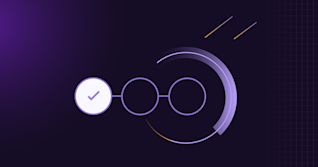As organizations grow, managing internal packages becomes increasingly complex. While traditional package managers, like JFrog Artifactory and Sonatype Nexus, use a centralized repository approach, GitLab takes a different path that aligns with modern development teams' work. In this post, we'll explore how to effectively structure your GitLab Package Registry for enterprise scale, focusing on Maven and npm packages as examples.
Understanding the GitLab Package Registry model
If you're coming from a traditional package manager, GitLab's approach might initially seem different. Instead of a single centralized repository, GitLab integrates package management directly into your existing project and group structure. This means:
- Teams publish packages to specific projects where the code lives
- Teams consume packages from root group registries that aggregate all packages below them
- Access control inherits from your existing GitLab permissions
This model offers several advantages:
- Clear ownership of packages alongside their source code
- Granular access control without additional configuration
- Simplified CI/CD integration
- Natural alignment with team structures
- Single URL for accessing all company packages through root group consumption
The power of root group package registry
While GitLab supports package consumption at various group levels, using the root group level has emerged as a best practice among our users. Here's why:
- Single access point: One URL provides access to all private packages across your organization
- Consistent package naming: Group-level endpoints allow teams to maintain their preferred naming conventions without conflicts
- Simplified configuration: All developers can use the same configuration to access packages
- Secure access management: Combines with deploy tokens for easy rotation and access control
- Hierarchical organization: Naturally maps to your organizational structure while maintaining unified access
Real-world example: Enterprise structure
Let's look at how this works in practice with a large enterprise:
company/ (root group)
├── retail-division/
│ ├── shared-libraries/ # Division-specific shared code
│ └── teams/
│ ├── checkout/ # Team publishes packages here
│ └── inventory/ # Team publishes packages here
├── banking-division/
│ ├── shared-libraries/ # Division-specific shared code
│ └── teams/
│ ├── payments/ # Team publishes packages here
│ └── fraud/ # Team publishes packages here
└── shared-platform/ # Enterprise-wide shared code
├── java-commons/ # Shared Java libraries
└── ui-components/ # Shared UI components
Publishing configuration
Teams publish packages to their specific project registries, maintaining clear ownership:
- Maven example
<!-- checkout/pom.xml -->
<distributionManagement>
<repository>
<id>gitlab-maven</id>
<url>${CI_API_V4_URL}/projects/${CI_PROJECT_ID}/packages/maven</url>
</repository>
</distributionManagement>
- npm example
// ui-components/package.json
{
"name": "@company/ui-components",
"publishConfig": {
"registry": "${CI_API_V4_URL}/projects/${CI_PROJECT_ID}/packages/npm/"
}
}
Consuming configuration
The power of root group consumption comes into play here. All teams configure a single endpoint for package access:
- Maven example
<!-- Any project's pom.xml -->
<repositories>
<repository>
<id>gitlab-maven</id>
<url>https://gitlab.example.com/api/v4/groups/company/-/packages/maven</url>
</repository>
</repositories>
- npm example
# Any project's .npmrc
@company:registry=https://gitlab.example.com/api/v4/groups/company/-/packages/npm/
This configuration automatically provides access to all packages across your organization while maintaining the benefits of project-based publishing.
Authentication and access control
GitLab's model simplifies authentication through deploy tokens and CI/CD integration.
For CI/CD pipelines
GitLab automatically handles authentication in pipelines using CI_JOB_TOKEN:
# .gitlab-ci.yml
publish:
script:
- mvn deploy # or npm publish
# CI_JOB_TOKEN provides automatic authentication
For development
Use group deploy tokens for package consumption:
- Create read-only deploy tokens at the root group level
- Rotate tokens periodically for security
- Share a single configuration across all developers
Benefits of root group package registry
- Simplified configuration
- One URL for all package access
- Consistent setup across teams
- Easy token rotation
- Clear ownership
- Packages stay with their source code
- Teams maintain control over publishing
- Version history tied to project activity
- Natural organization
- Matches your company structure
- Supports team autonomy
- Enables cross-team collaboration
Getting started
- Set up your root group
- Create a clear group structure
- Configure appropriate access controls
- Create group deploy tokens
- Configure team projects
- Set up project-level publishing
- Implement CI/CD pipelines
- Document package naming conventions
- Standardize consumption
- Configure root group registry access
- Share deploy tokens securely
- Document package discovery process
Summary
GitLab's package registry model, particularly when leveraging root group consumption, offers a powerful solution for enterprise package management. By combining project-based publishing with root group consumption, organizations get the best of both worlds: clear ownership and simplified access. This approach scales naturally with your organization while maintaining security and ease of use.
Start by implementing this model with a single team or division, and expand as you see the benefits of this integrated approach. Remember that while this post focused on Maven and npm, the same principles apply to all package types supported by GitLab.
Get started with package registries today! Sign up for a free, 60-day trial of GitLab Ultimate.



